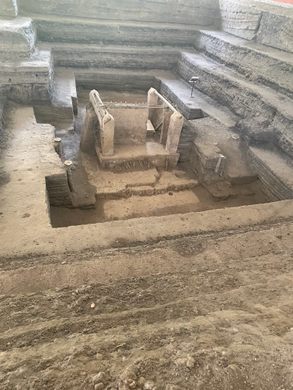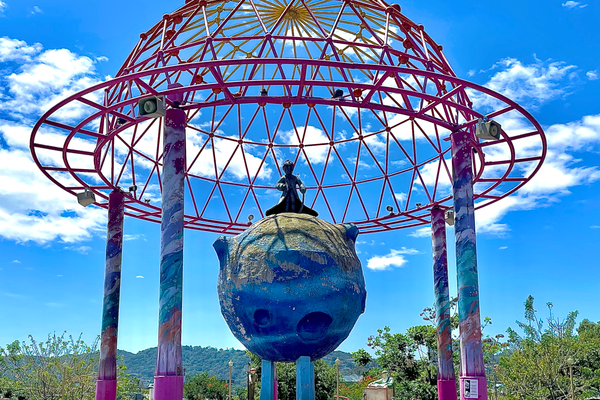Joya de Cerén was a pre-Hispanic farming community that, like Pompeii and Herculaneum in Italy, was buried under an eruption of the Laguna Caldera volcano c. AD 600. Because of the exceptional condition of the remains, they provide an insight into the daily lives of the Central American populations who worked the land at that time.
Joya de Cerén is remarkable by virtue of the completeness of the evidence that it provides of everyday life in a Mesoamerican farming community of the 6th century AD, which is without parallel in this cultural region. It was a pre-Hispanic farming community that, like Pompeii and Herculaneum in Italy, was buried under a volcanic eruption about AD 590. Although a warning earthquake apparently gave residents time to flee, the ash preserved their personal belongings, from garden tools and bean-filled pots to sleeping mats and religious items, essentially freezing the agricultural village in time. Because of the exceptional condition of the remains, they provide an insight into the daily lives of the Central American peoples who worked the land at that time.
Around AD 200, the central and western parts of the territory of the modern Republic of El Salvador were buried beneath thick layers of volcanic ash from the Ilopango volcano. The area was abandoned and the late pre-Classical Maya cultural evolution was interrupted for several centuries until the ash layer had weathered into fertile soil.
Resettlement did not begin until around 400, and the Joya de Cerén settlement was founded before the end of the 6th century. As excavations are still in progress, it is not yet clear whether it was a small village or a larger community. Evidence from the structures excavated so far suggests that the inhabitants were farmers.
Not long afterwards, around 600, Joya de Cerén was destroyed by the eruption of the Loma caldera, less than 1 km from the settlement. Although the eruption only affected some 5 km2 , it completely buried Joya de Cerén under 5-7 m of volcanic ash.
The site was discovered during the construction of government grain-storage silos in 1976, when a clay-built structure was exposed by a bulldozer. Excavation were carried out under the direction of Dr Payson D. Sheets (University of Colorado) in 1978 and 1980, but were interrupted by civil war. They were resumed in 1988 and have been continuing since that time.
Twelve structures were excavated, including living quarters, storehouses, workshops, kitchens, a communal sauna and a religious structure. Cerén is thought to have been home to about 200 people, although no human remains have been found. The buildings are grouped into compounds that include structures for sleeping, storage, cooking and handicrafts. The specialized structures include a sweat house, a large communal building, and two which may have been used by specialists such as a shaman or a healer.
The volcanic eruption was so sudden that artefacts representative of every aspect of daily life were found still in place around the buildings, while perishable materials, including plants, survive either as carbonized material or as casts in the ash deposit. The objects recovered by excavation from the buildings constitute a virtual inventory of their contents at the moment of eruption.
Several cultivated fields and other vegetation have also been uncovered. These include fields containing young and mature maize plants, a kitchen garden with a variety of herbs and a henequen (agave) garden. Various fruit trees, including guayaba and cacao, have also been found.
Source: UNESCO/CLT/WHC



























Follow us on Twitter to get the latest on the world's hidden wonders.
Like us on Facebook to get the latest on the world's hidden wonders.
Follow us on Twitter Like us on Facebook